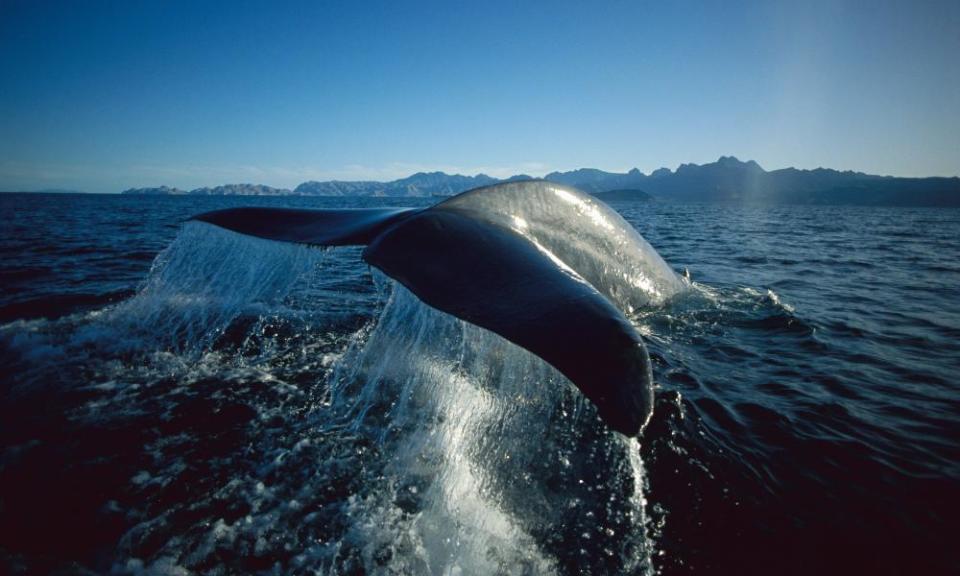On a roll: blue whales switch 'handedness' when rolling to scoop food

They are the largest animals on Earth, can live to around 90 years old and have a tongue that weighs as much as an elephant. Now scientists have revealed another insight into blue whales: how they roll.
A study has found that blue whales have a tendency to roll to one side or the other when lunging for prey, with the preference apparently down to the depth of the water and the type of roll they execute.
“As humans we think lateralisation [like “handedness”] is a uniquely human trait but actually you find it in a broad range of species in the animal kingdom,” said James Herbert-Read, co-author of the study from Stockholm University.
“What we often find is that individuals that are lateralised, so perform a behaviour predominantly with one side of their body, have more efficient behaviours – they can be more efficient at feeding, more efficient at avoiding predators.”
The team say new research suggests this might well be true for the blue whale. But, he adds, there is an exciting twist.
“These lateralized behaviours [are] manifesting depending on where and how that particular behaviour, which is feeding, occurs. That was the really new thing,” he said.
Writing in the journal Current Biology, researchers from the US and Sweden describe how they fitted motion tracking sensors to 63 blue whales to explore their movements.
The team found that the blue whales more often completed side-rolls – in which the whale tipped to one side then righted itself – at depths of more than 70 metres. Full barrel rolls were more common in shallower waters, with the whales attacking at a steeper angle.
The team then looked at data from 49 individuals that completed 10 or more rolls of any kind, finding that 28 of the whales more often rolled in one direction, with 75% rolling to the right.
Delving deeper, the team discovered that blue whales more often rolled to the right for side-rolls and to the left for barrel rolls.
“When they are at the surface they are more likely to turn towards the left-hand side and do these larger rolls, and when they are at depth they are more likely to turn to the right and do these smaller rolls,” said Herbert-Read.
The team suggests that preference for the type of roll, and the direction, could be down to the distribution of small crustaceans known as krill, upon which the whales feed – with sparser patches in shallower water potentially requiring more athletic rolls for the whale to scoop a meal.
“[The blue whales] are trying to target these really small items of prey at the surface of the water and so they need to have some sort of predictive motor control,” said Herbert-Read. “In humans and other vertebrates this predictive motor control comes from the left side of the brain.”
By rolling to the left, the whales keep their right eye on the prey. “In vertebrates, all the information that is processed through the right eye is processed by the left side of the brain,” he noted.
Herbert-Read added that he hopes the discovery will encourage efforts to protect the blue whale. “I think it is just amazing that these are the largest animals that ever lived and we are still finding out these interesting and fascinating aspects of their behaviour which we had no idea about,” he said.

 Yahoo News
Yahoo News 